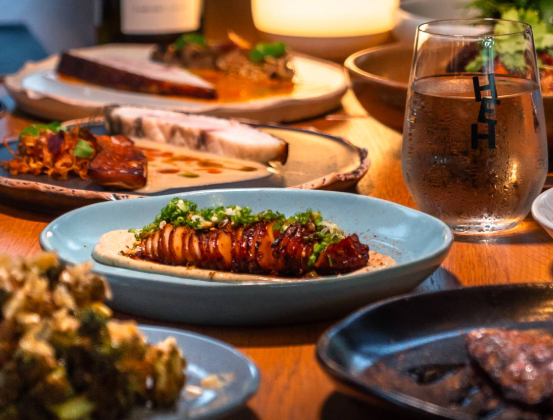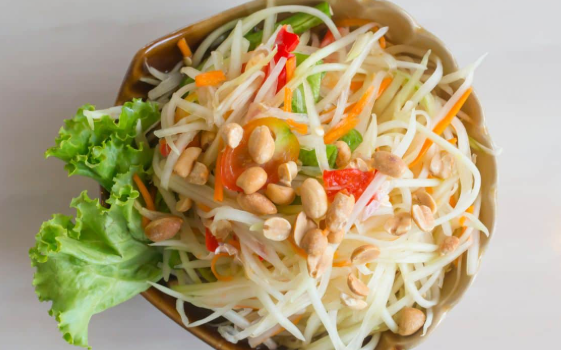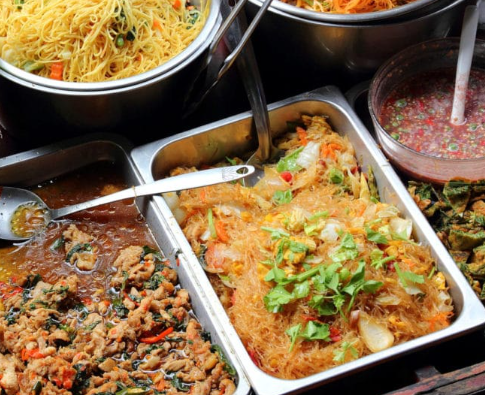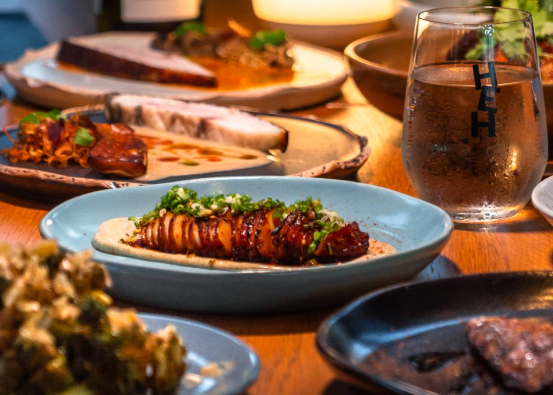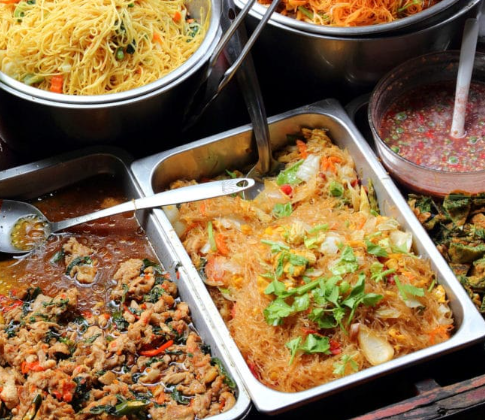
Som Tam, or papaya salad, is a dish that holds a special place in the hearts of food lovers, especially in Thailand. Recently, I’ve seen numerous discussions about the “best” Som Tam, but I believe that the idea of the best is highly subjective. Instead of focusing on the “ultimate” version, let’s take a closer look at how you can create your own ideal Som Tam, tailored to your preferences.
When it comes to ordering Som Tam, there’s a lot of flexibility. For me, I always opt for Som Tam Thai, which is a popular choice among tourists. However, I prefer to adjust the flavors to suit my taste. I usually ask for a spicier and more sour version compared to the typical Som Tam Thai, and I make a few tweaks like reducing the amount of dried shrimp, omitting palm sugar, and choosing smaller cuts of tomatoes and long beans (which can be tricky to communicate in some places). I like my Som Tam to be fiery, so I usually request seven birds-eye chillies, though I wouldn’t recommend this for newcomers. For crunch, I add a bit extra peanuts, and for that tangy kick, I combine both tamarind water and lime juice. My version of Som Tam is less sweet (mai wan) and much hotter (phet phet). While it resembles a more local plate, I’ve left out some of the bolder regional flavors.
Regional Twists on Som Tam
Now, if we’re talking about the most authentic Som Tam, many would argue that Pla Ra, a fermented fish sauce, is a key ingredient. It’s quite a distinctive flavor, and while it can elevate the dish, it has an overpowering odor that might take some getting used to. Having witnessed the making of Pla Ra at Isaan markets, and having experienced its pungent smell when boiled by the locals, I’ve personally become a bit squeamish about it. For those outside Thailand, finding Pla Ra can be nearly impossible, and given that it’s known to contain harmful liver flukes, it’s probably best to avoid it, though I still recommend trying it at least once.
Another common local addition to Som Tam is pickled soft shell crabs. While I’ve never personally ordered Som Tam with crab, it’s not uncommon to find stray crab limbs leftover in the dish due to the lack of thorough cleaning between uses of the mortar and pestle. For those with allergies (like to peanuts), it’s important to be cautious. A milder addition often found in Som Tam is ‘Khanom Jeen,’ fermented rice noodles. This variation, known as Tam Sua, is another popular choice. However, I’ve yet to meet a local who orders or even knows about Som Tam Thai; it’s mainly a term familiar to tourists.
The Perfect Accompaniments for Som Tam
In my experience, Som Tam is almost always served with sticky rice, not jasmine rice. In some places, you might also find fermented rice noodles (Khanom Jeen) as an alternative. Additionally, many Som Tam stalls offer ‘Kap Moo,’ Thailand’s version of pork scratchings, which provide a nice crunch to complement the dish. Another option is ‘Kap Kai,’ crispy chicken skins, which I recommend pairing with Kap Moo for the perfect crunch combination. To make a complete meal, grilled chicken (‘Kai Yang’) or grilled pork neck (‘Kor Moo Yang’) are often available nearby. If you’re in the mood for something extra, adding a bottle of Beer Leo or local Thai whisky can make for a great night.
Recently, there’s been a trend of serving Som Tam Tad, which features a variety of local flavors and accompaniments. This version may include Khanom Jeen rice noodles, salted eggs, steamed pork (Moo Yor), dried anchovies (Pla Ching Chang), and even century eggs (Khai Yiao Ma). While this may sound strange, it’s definitely an adventurous variation that’s gaining popularity.
Som Tam Without Papaya?
Despite the dish being widely known as “papaya salad,” the term Som Tam is more about the technique than the ingredient. Som Tam refers to a style of sour salad prepared by pounding fruits or vegetables in a mortar and pestle. While papaya is the most common base, any unripe, sour fruit can be used. Outside Thailand, unripe papayas can be hard to find, and shredding them requires the proper tools. In such cases, alternatives like long beans (used in a dish called ‘Tam Tua’) or shredded carrots are great options. Some places also use cucumber as a substitute, creating a refreshing side dish after being pounded into the mix. While these substitutions can be tasty, nothing beats the crispness and sourness of freshly cut papaya.
Som Tam Around the Region
To truly appreciate the diversity of Som Tam, it’s worth exploring variations beyond Thailand. In Laos, for example, Som Tam is known as Tam Mak Hoong, which shares similarities with the Thai version but adds a unique twist with Makok, a sour, olive-like berry. In Myanmar, papaya salads take on a different form altogether. Known as Let Thoke Sohn, which translates to “hand-tossed everything,” this version incorporates a wider array of fruits, vegetables, and even tea leaves. While I don’t claim to be an expert in Burmese papaya salads, it’s certainly worth exploring if you’re a fan of Som Tam and want to experience new takes on the dish.
Whether you’re enjoying a simple Som Tam Thai with extra spice or diving into the bold flavors of regional variations, there’s no shortage of ways to enjoy this beloved Thai dish. With each twist and turn of the mortar and pestle, a new experience awaits!

